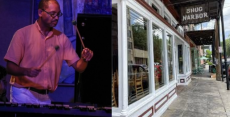
JASON MARSALIS
Jason Marsalis is the youngest son of piano patriarch and jazz luminary Ellis Marsalis Jr. Upon the presentation of their NEA Jazz Masters Award in 2011, The Marsalis’ were declared “America’s First Family of Jazz”. In addition to his renown as a drummer, Jason is also a respected vibraphonist whose 2018 release “Melody Reimagined ” with his 21st Century Trad Band rose swiftly to the top of the Billboard jazz chart. With a fire in his heart and a passion for the music, his will to swing has never been more resolute. The maturity and the command Jason possesses over his music is clearly evident to those who have heard or seen him.
More Posts: adventure,bandleader,club,genius,instrumental,music,preserving,travel,vibraphone
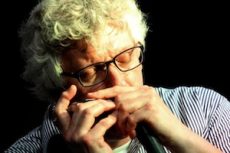
HENDRIK MEURKENS
Hendrik Meurkens, a virtuoso on both the chromatic harmonica and the vibraphone, is the most important jazz harmonica player since Toots Thielemans. A two-mallet player in the tradition of Milt Jackson and Bobby Hutcherson, Hendrik Meurkens was en-route to being an instantly recognizable vibraphonist when he heard Toots Thielemans. Inspired by the sound of Thielemans’ harmonica, he taught himself the difficult-to-master instrument.
His other life-changing musical experience was his introduction to samba and bossa nova. He was so moved by Brazilian music that after perfecting his unique musical voice at Berklee, as a vibraphone major, he moved to Rio in the early 80s to totally immerse himself in music and culture of Brazil.
Within ten years, he had established himself as the “new jazz harmonica voice,” and moved to New York, thanks to an exclusive contract with the prestigious label, Concord Records. He has since recorded fifteen albums, and continues to perform as both a guest artist, and with his own groups, both in festivals and clubs globally.
Hendrik Meurkens’ profound involvement in both jazz and Brazilian music resulted in a very personal and instantly recognizable version of Samba jazz. This music features his harmonica and vibes along with piano, bass and drums, playing his stirring originals and arrangements.
Tickets: $20 – $45 | $2.33 – $3.56 Fees
More Posts: adventure,bandleader,club,genius,harmonica,instrumental,jazz,music,preserving,travel,vibraphone
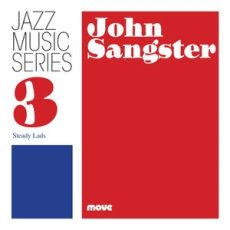
Daily Dose Of Jazz…
John Grant Sangster was born November 17, 1928 in the Melbourne suburb of Sandringham, Victoria, Australia. He was an only child that attended primary schools in Sandringham and Vermont, and then Box Hill High School. While at high school he taught himself to play trombone and with a friend, Sid Bridle, formed a band.
In 1946 he started a civil engineering course at Melbourne Technical School. Two years later Sangster performed at the third annual Australian Jazz Convention, held in Melbourne. By the following year he led his own ensemble, John Sangster’s Jazz Six, which included Ken Evans on trombone. He provided trombone for Graeme Bell and his Australian Jazz Band, later took up the cornet and then the drums. They toured several times from 1950 to 1955, and in the late Fifties he began playing the vibraphone.
He went on to play with Don Burrows in the early 1960s, form his own quartet and experimented with group improvisatory jazz, after becoming interested in the music of Sun Ra and Archie Shepp. By the end of the Sixties his attention turned to rock musicians and he joined the expanded lineup of the Australian progressive rock group Tully, who provided the musical backing for the original Australian production of the rock musical Hair. He performed and recorded with Tully and their successors, Luke’s Walnut, throughout the two years he played in Hair. In 1970 he re-joined the Burrows group for Expo 1970 in Osaka, Japan.
In the 1970s Sangster released a series of popular The Lord of the Rings inspired albums that started with The Hobbit Suite in 1973. He was also the composer of a large number of scores for television shows, documentaries, films, and radio. In 1988, Sangster published his autobiography, Seeing the Rafters.
Trombonist John Sangster, who also plays trumpet, drums, percussion, cornet, vibraphone and is best known as a composer, died in Brisbane, Queensland, Australia on October 26, 1995 at age 66.
More Posts: bandleader,composer,cornet,drums,history,instrumental,jazz,music,trombone,trumpet,vibraphone
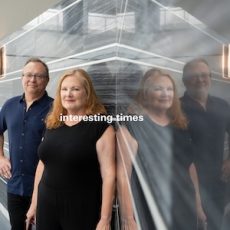
Daily Dose Of Jazz…
Mark Wagnon was born on October 26, 1956 in Lausanne, Switzerland and his talent as a percussionist was immediately evident. His early musical tastes focused on progressive rock bands like King Crimson, Led Zeppelin, Yes and Genesis. He was impressed with the fusion sounds of Miles Davis and the Mahavishnu Orchestra. However, it was a Gary Burton concert, which helped him focus his desire to become a musician.
He entered the Geneva Conservatory to study classical percussion, including the vibraphone, which would become his instrument of choice. The five years that Wagnon spent at the Geneva Conservatory he also spent a year at the Berklee School of Music in Boston, Massachusetts. While there he met Dave Douglas, and Dave Kikowski, who would become his consistent collaborator.
After his stint at Berklee, Mark moved to New York City where he began a series of projects and really began to develop his own unique style. He formed Dr. Nerve with Kikowski, a band described as Schoenberg meets the Sex Pistols. As a member of Tunnels with bassist Percy Jones and drummer Frank Katz, their album featured a more straight-ahead jazz fusion sound showing his skill on the vibes.
With Dr. Nerve, they released seven albums, and with No No Diet Bang, a collection of Swiss musicans, one cd titled Profan, and kicked off his new music service company, Buckyball, by releasing a collaboration with vocalist and Buckyball co-founder Sarah Pillow titled Paper Cuts, which was a collection of jazz standards. They would go on to release several other Wagnon releases, including a reissue of a late ’80s project, Shadowlines.
Vibraphonist Mark Wagnon has since delved into experimental jazz territory, and is consistently showing off his ever evolving technical mastery.
More Posts: bandleader,history,instrumental,jazz,music,vibraphone
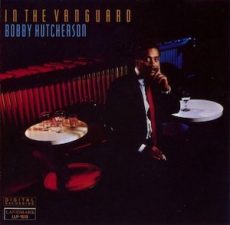
Requisites
In The Vanguard ~ Bobby Hutcherson | By Eddie Carter
This morning’s discussion arose because I’ve been listening intensely to several great vibraphonists in my library recently, leading me to an underrated live album by Bobby Hutcherson. In The Vanguard (Landmark Records LLP-1513) hit the stores in 1987 and documents excerpts of his performance over two December nights the year before at the Village Vanguard. Bobby was the first artist Orrin Keepnews signed for his new record label; this was his third release. The quartet consists of Bobby Hutcherson on the vibraphone and marimba, Kenny Barron on piano, Buster Williams on bass, and Al Foster on drums. My copy is the original U.S. Stereo album.
The opener, Little Niles by Randy Weston, is a jazz waltz. The quartet gets things off to a spirited start with their melody. Bobby opens the soloing with an infectiously swinging groove. Kenny keeps the lyricism intact with a compelling case ahead of the theme’s restatement and close. Estaté by Bruno Martino and Bruno Brighetti is up next. Williams and Hutcherson set the song in motion with a pretty introduction. Barron and Foster enter next to add sensitive warmth to the gorgeous melody. Bobby’s opening solo is beautiful; then Kenny articulates his ideas tenderly while Buster and Al hold everything together into the quartet’s graceful climax.
Well, You Needn’t by Thelonious Monk and Mike Ferro opens with Bobby’s introduction before the ensemble’s theme takes off quickly. Bobby is out of the gate first with an exhilarating reading. Kenny steps up next to play with exciting urgency. Buster and Al share a moment in the closer, preceding the foursome’s return with a quick resolution. Side Two starts with Some Day My Prince Will Come by Frank Churchill and Larry Morey. The ensemble establishes the song with a quaint melody that moves upward for Hutcherson’s opening solo. Barron turns in an exquisite performance next, and Williams provides a superbly conceived finale, one of the album’s highlights before the reprise and ending.
Witchcraft by Cy Coleman and Carolyn Leigh begins with a two-instrument dialogue between Bobby and Buster, segueing into the quartet’s lovely melody. Bobby kicks off the solos with a stream of imaginative ideas. Kenny takes the reins, gliding to the rhythm section’s buoyant beat ahead of the song’s conclusion. I Wanna Stand Over There by Bobby Hutcherson is off to the races during the quartet’s upbeat theme. Barron comes right out of the gate, bristling with energy. Hutcherson follows with a hard-driving interpretation; then Foster provides the album’s final fireworks in a short solo ahead of the theme’s restatement and climax.
In The Vanguard is a digital recording produced by Orrin Keepnews and Tom Mark, the recording engineer. George Horn mastered the album, and Danny Kopelson provided the digital transfer, editing and sequencing at Fantasy Studios. The album’s sound quality is exceptional, capturing the live energy and ambiance of the Village Vanguard. The listener becomes a part of the audience as the musicians perform with crystal-clear fidelity. Despite its high-quality performance and recording, this album is often overlooked in Bobby Hutcherson’s discography. But please don’t let that discourage you from checking out In The Vanguard by Bobby Hutcherson the next time you’re out record shopping. It’s a jazzy treat for your ears and an absolute pleasure to listen to, especially if you enjoy live jazz albums!
Postscript: Estaté is listed on the Side One label and back album cover with two composers, Bruno Martino, and Bruno Brighetti. I have no idea why this happened, but they are the same man, Bruno Martini. He was an Italian composer, pianist, singer, and songwriter. Estaté was his best-known composition; many jazz musicians and vocalists have recorded it since its first appearance in 1960. Martino’s career lasted fifty-five years; he died on June 12, 2000, at age seventy-four.
~ Bruno Brighetti, Bruno Martino – Source: Discogs.com
~ Some Day My Prince Will Come – Source: JazzStandards.com
~ Little Niles, Witchcraft – Source: Wikipedia.org
© 2024 by Edward Thomas Carter
More Posts: choice,classic,collectible,collector,history,instrumental,jazz,music,vibraphone



